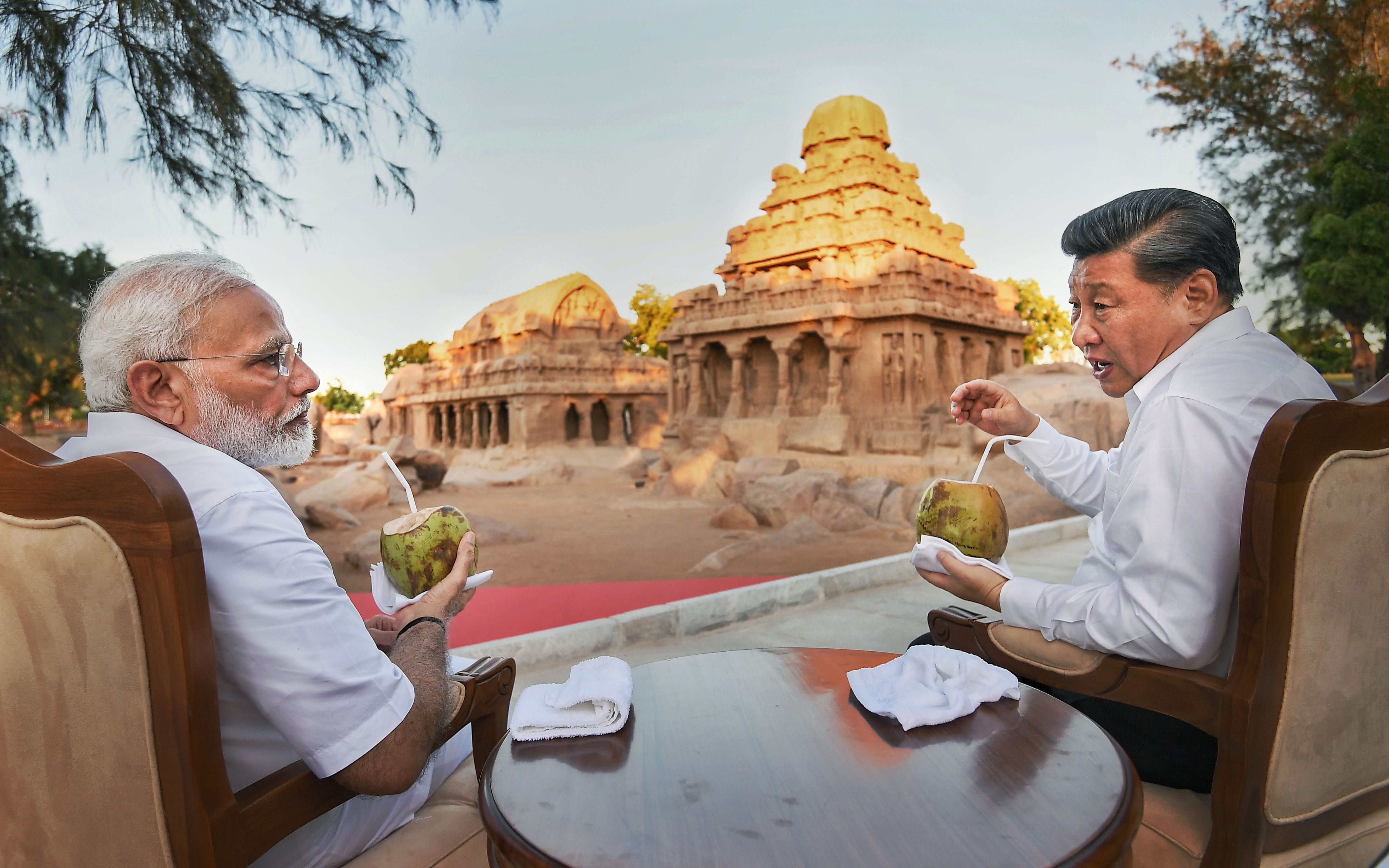
Modi-Xi bonhomie at Mamallapuram sends out a positive message
Clad in traditional south Indian white veshti, Prime Minister Narendra Modi on Friday received visiting Chinese President Xi Jinping at Arjuna’s Penance in Mamallapuram. The two leaders were in the coastal city of the southern state for their second informal meeting.

Clad in traditional south Indian white veshti (dhoti), Prime Minister Narendra Modi on Friday (October 11) received visiting Chinese President Xi Jinping at Arjuna’s Penance in Mamallapuram.
The two leaders were in the coastal city of the southern state for their second informal meeting. According to government sources, the two leaders are expected to issue some directions at the end of the summit like they did after their first informal meet in the Chinese city of Wuhan last year, reported news agency PTI.
Modi had reached Mamallapuram well ahead of Xi by a chopper. Later, when the Chinese President arrived, the Prime Minister was seen sporting a Tamil traditional ‘karai veshti’ (dhoti with a green-coloured border), an angavastram (a shawl), and a half sleeve shirt. Xi wore a full sleeve shirt and black trousers.
The Prime Minister’s attire was praised by several leaders from the southern states, including Pattali Makkal Katchi founder S Ramadoss and Karnataka’s Tourism minister CT Ravi.
Also read | Twitterati echo ‘GoBackModi’ in Mandarin, but ‘welcome’ Xi Jinping
The Chinese president was accorded a red carpet welcome at the airport here on his arrival and received by Tamil Nadu Governor Banwarilal Purohit, Chief Minister Edappadi K Palaniswami, Deputy Chief Minister O Panneerselvam and the state Assembly Speaker P Dhanapal.
Amid strained bilateral ties between the two countries over India’s Kashmir move, visuals of the two leaders sipping coconut water and engaging in casual conversations in a serene setting sent a positive message across the global political circles.
Besides, Modi also took Xi for a guided tour of the world heritage sites of Arjuna’s Penance, Krishna’s Butterball, the Pancha Ratha and Shore temple in the ancient temple town of Mamallapuram.
The free flowing nature of the Informal Summit at the UNESCO World Heritage site will continue and deepen contacts at the highest level and guide the future trajectory of India-China relationship.
— Raveesh Kumar (@MEAIndia) October 11, 2019
“The free flowing nature of the informal summit at the Unesco world heritage site will continue and deepen contacts at the highest level and guide the future trajectory of India-China relationship,” tweeted External Affairs Ministry spokesperson Raveesh Kumar.
During the guided tour, live footage showed Modi explaining to Xi the historical significance of the monuments and the latter was also seen showing keen interest in the caves and stone sculptures at the heritage site. The two leaders were assisted by one translator from each side.
Also read | Xi Jinping treated to bharatanatyam, kathakali and TN folk art at summit
They sat down for around 15 minutes at the Pancha Ratha complex and engaged in casual talks while sipping coconut water, following which, they visited the Shore temple, a symbol of cultural heritage of the Pallava dynasty.
Thereafter, they were joined by top delegates of both sides and they witnessed a cultural programme presented by Kalakshetra society, said reports.
About 500 Tamil folk artistes rendered performances, including tappattam and poi kal kuthirai, while a group of colourfully dressed women presented a Bharatanatyam programme to the accompaniment of thavil and nadaswaram (traditional percussion and wind instruments respectively) music.
Also read | Rasam, sambar and halwa on Xi’s dinner menu
A smiling Xi waved at the artistes as he paused briefly before moving on slowly.
After the event, the Prime Minister hosted Chinese PM for a private dinner at the Shore temple complex, which was beautifully decorated with lights and flowers. Eight delegates from each side were also invited for the dinner.
Delicately selected authentic Tamil cuisines including vegetarian and non-vegetarian dishes were served in the dinner. As per reports, the cuisines included sambar (a south Indian recipe of lentils), thakkali rasam (made of tomato and imli), kadalai (chick pea, generally) korma and halwa.


